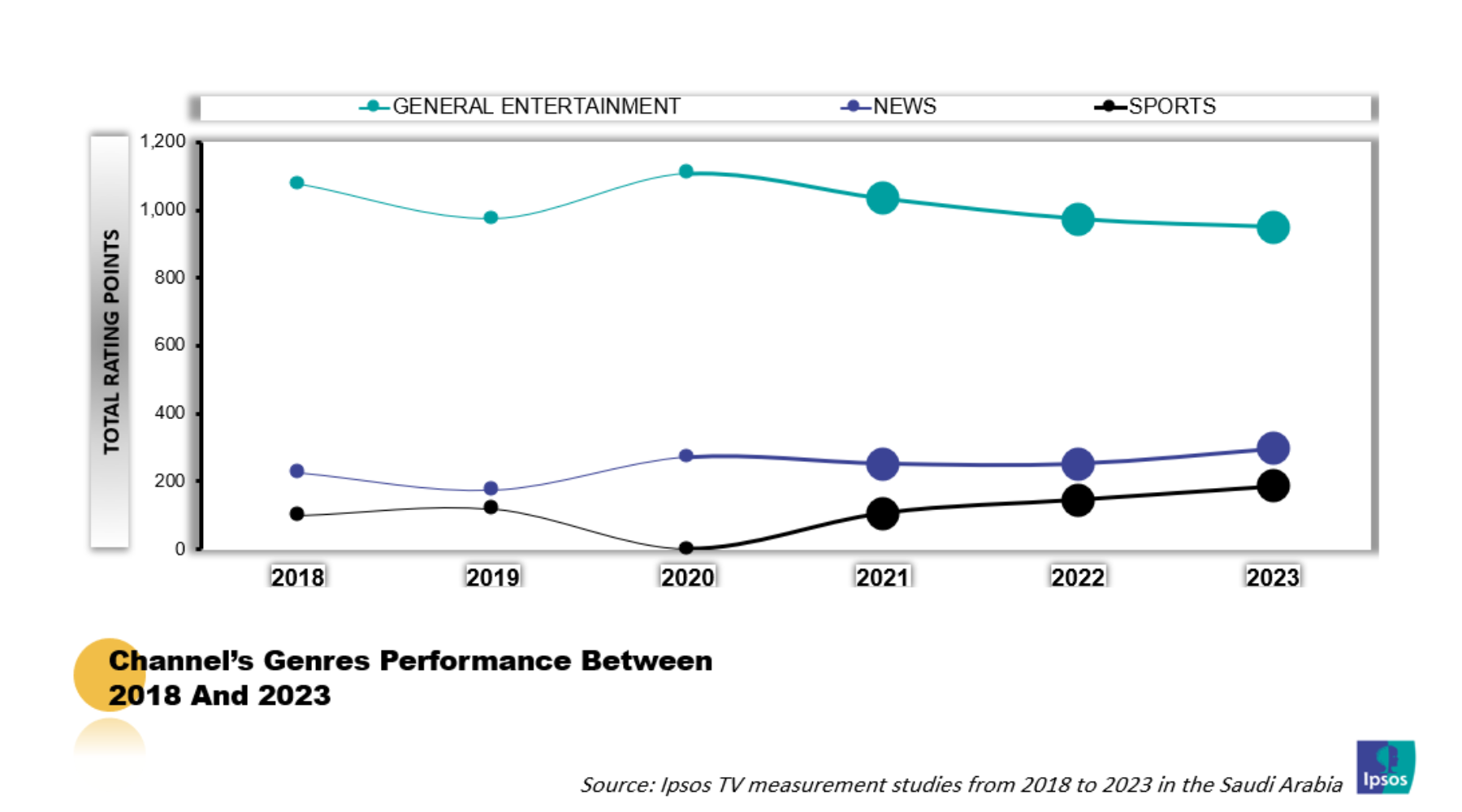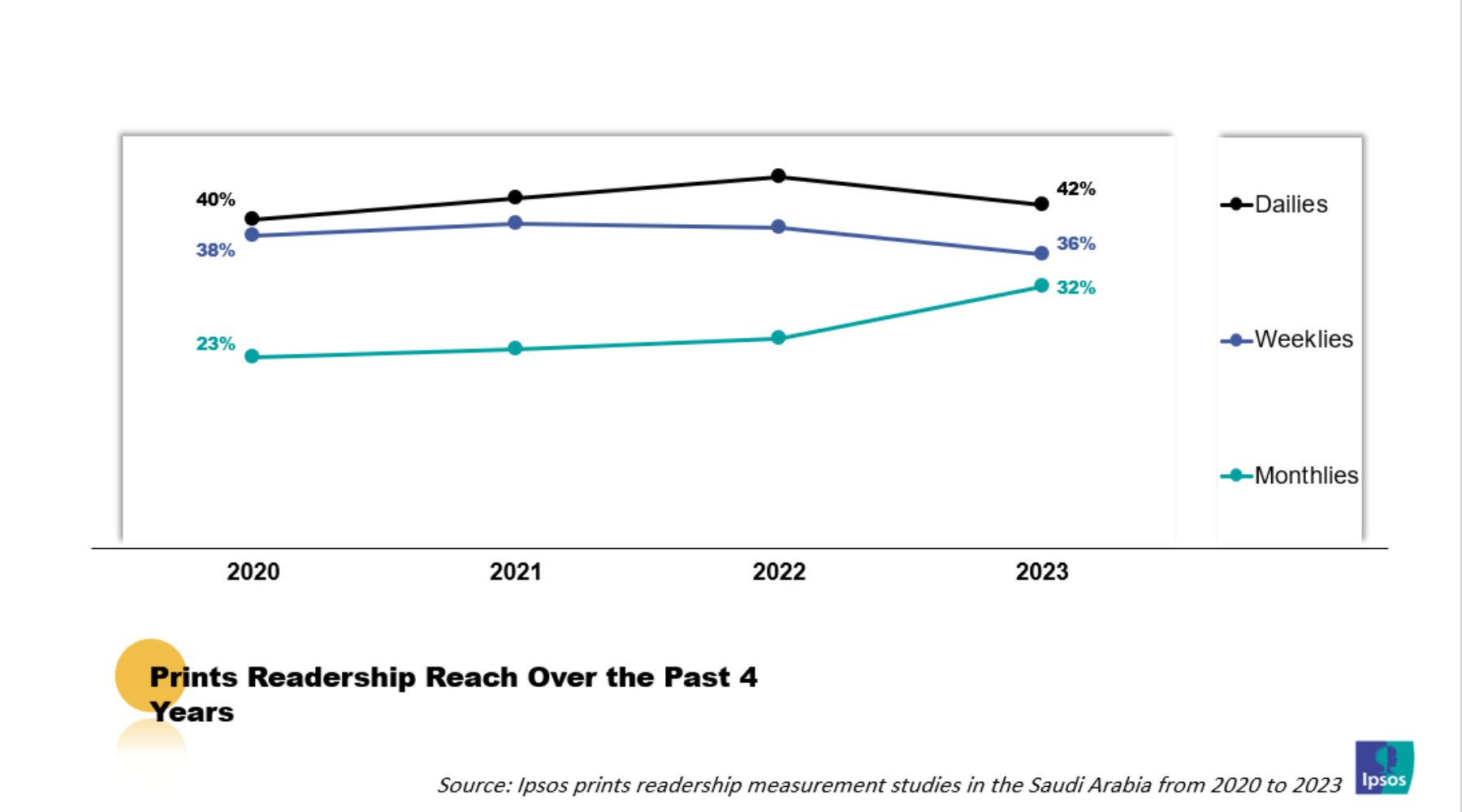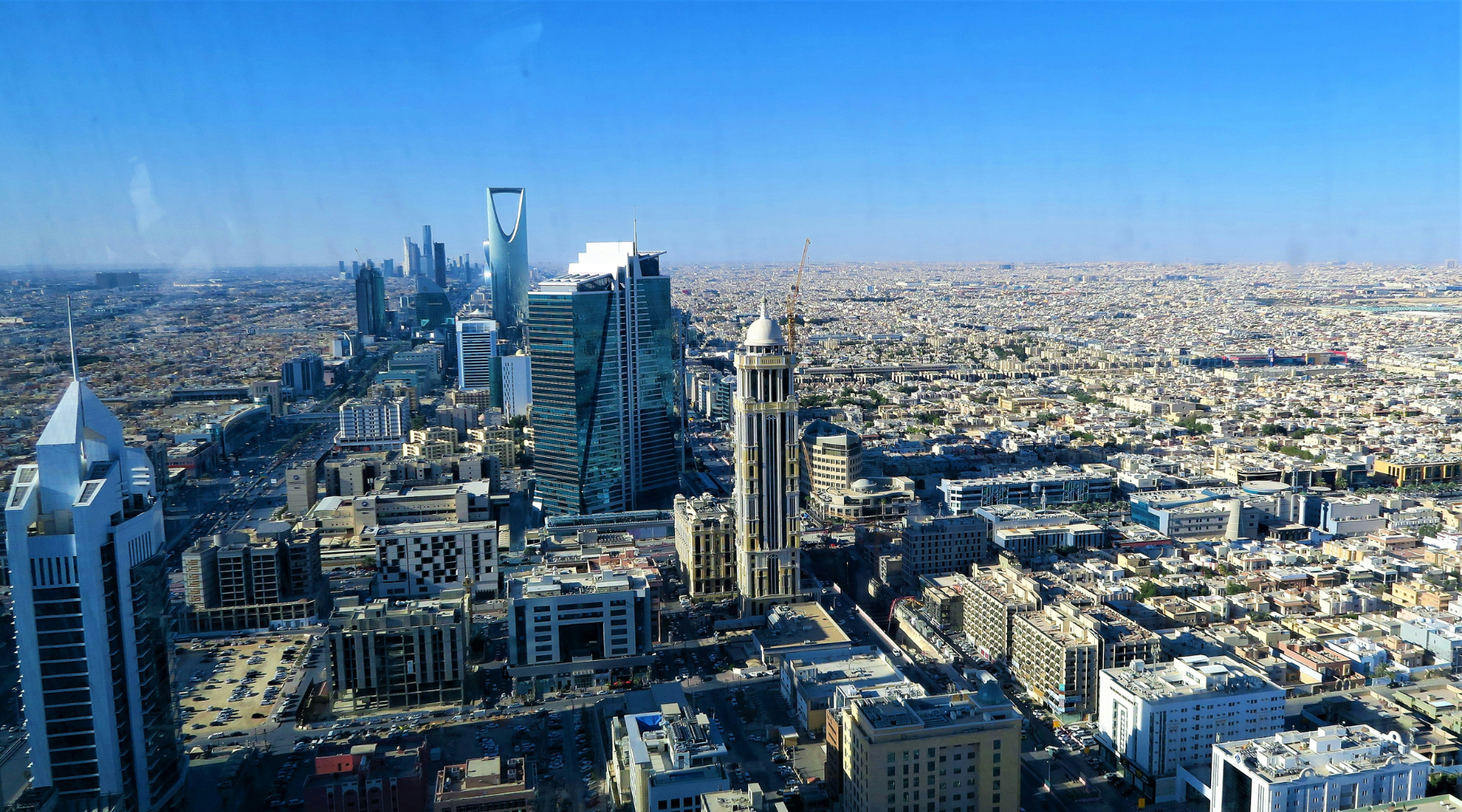Over the past decade, the media landscape has seen continuous transformation, marked by dynamic shifts in trends and technologies. The rise of streaming services and digital platforms has reshaped traditional media, challenging conventional wisdom about consumption habits. This article aims to provide a comprehensive analysis of how attitudes toward Saudi media entertainment and consumption behaviors varied throughout the year.

Consumers now have a myriad of channels to engage with their favorite content. Linear television remains dominant, captivating over 96% of the total population in KSA, with the average viewing time standing at approximately 5 hours and 25 minutes. This reflects an increase of nearly 15 minutes compared to the previous year, attributed to the greater availability of content in different genres, especially since the start of the COVID-19 pandemic.
In the Saudi market, consistent growth and influence from political, social, and economic events, led to a resurgence in news and political program ratings, reaching a peak in 2023 with nearly 290 total rating points. After a COVID-19-related hiatus in 2020, sports content viewership in Saudi Arabia saw a notable increase in 2023, driven by heightened interest in major events like the Saudi Games, FIFA Qatar World Cup 2022, and resulting in a 30+ rating point increase since 2020, predominantly among male audiences.

In addition to traditional television and offline alternatives, audiences are now experiencing an enriched digital experience. Online streaming platforms and Subscription Video-on-Demand (SVOD) services complement traditional linear TV viewership, with 25% of viewers dedicating between 3 and 5 hours towards SVOD services daily. This phenomenon is attributed to the audience's exposure to diverse viewing options, leading to a broadening of preferences and genres.

Ipsos’ 2023 Tech Tracker study in KSA reveals a consistent internet penetration rate of 96% over the past three years with 87% of the population primarily accessing the internet via smartphones. Social media interactions are active, with 97% of internet users participating through various messaging platforms. Online newspaper readership has increased, with 62% reading newspapers online, a 3% increase from 2022 figures.
Over the past six years, there has been a gradual shift in print readership, encompassing both online and offline mediums among Saudis and Arabs. Daily newspaper readership has declined since 2017, but print remains significant, with nearly 40% engaging with at least one publication or newspaper daily. Similarly, the weekly readership pattern has mirrored daily readership with 36% of locals and Arabs in the Kingdom reporting the consumption of at least one magazine per week, be it online or offline. This trend in both daily and weekly readership is concurrent with a rising inclination towards monthly readership. Monthly readership patterns also show an upward trajectory, between 2017 (22%) and 2023 (32%), indicating a rise in preferences for longer-form content across formats.

Radio maintains a pivotal role as a cornerstone of offline media in Saudi Arabia, particularly given its indispensable role as a primary source of entertainment during vehicular journeys. The radio in landscape in KSA has undergone a transformative evolution in less than a decade, transitioning from primarily news and religious-focused stations to encompassing a diverse array of content, including music, and entertainment programming. Ipsos Radio Measurement study in November 2023 indicates that 84% of the population actively listens to the radio, allocating approximately 3 hours daily to this medium. Online streaming has augmented the conventional radio listening experience, marking a maturation in music streaming activities.
The conventional radio listening experience has evolved with the widespread adoption of online streaming, indicating a maturation in music streaming trends. A significant majority, more than 8 out of 10 individuals, can now be classified as active streamers, with a majority belonging to the younger demographic, specifically those under 34 years old. A noteworthy observation is that half of the users engage with music-streaming content daily. Additionally, there is a considerable increase in the popularity of podcasts in Saudi Arabia, with a notable 76% penetration rate in 2023. Comedy and sports content have emerged as the top preferences among podcast listeners.
Today, audiences are immersed in a diverse array of media content across both online and offline platforms. Despite the surge in digital content consumption and the proliferation of on-demand services, linear TV continues to hold a prominent position in KSA, which means, that rather than compensating for any decline in linear TV viewership, online streaming is enhancing the overall media consumption experience by adding extra hours of consumption.
Traditional linear TV broadcasters have strategically intensified their digital presence, utilizing social media channels and streaming services to augment their reach. Consequently, the ascent of digital viewership is not supplanting TV viewership but rather complementing it. This development presents a favourable scenario for brands and advertisers aiming to comprehend their audiences better. It significantly expands the opportunities for advertisers to convey their messages across a substantial volume of media channels. However, it also underscores the importance of understanding the audience you aspire to reach, as inaccurate targeting may lead to potential consumer disengagement and wastage.
Notwithstanding the rise of digital media, the TV screen continues to wield considerable influence in Saudi Arabia, and the advent of Connected TV (CTV) further fortifies the prominence of the TV screen, transforming traditional television into a more versatile and interactive platform. This evolution safeguards the future of the TV screen, offering both viewers and advertisers novel opportunities and experiences in the continually evolving landscape of television and entertainment.





